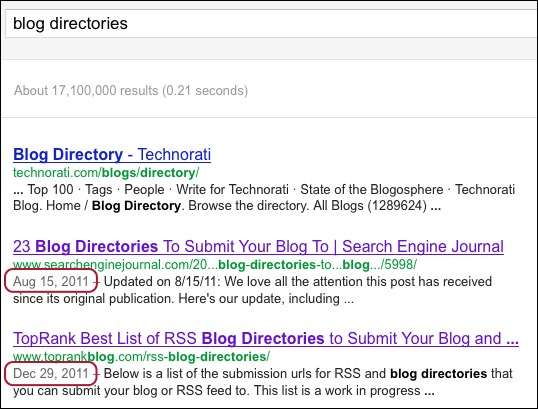Google Announces “Megasitelinks,” Image Search Improvements & Better Byline Dates
Among several interesting new search tweaks in Google’s latest monthly recap is a project internally called “Megasitelinks,” along with improvements to Google’s image search tool, its detection of “byline dates” on web documents and much more. Google just began doing monthly overviews of its search changes in November, and this latest overview includes 30 tweaks […]
 Among several interesting new search tweaks in Google’s latest monthly recap is a project internally called “Megasitelinks,” along with improvements to Google’s image search tool, its detection of “byline dates” on web documents and much more.
Among several interesting new search tweaks in Google’s latest monthly recap is a project internally called “Megasitelinks,” along with improvements to Google’s image search tool, its detection of “byline dates” on web documents and much more.
Google just began doing monthly overviews of its search changes in November, and this latest overview includes 30 tweaks that happened in December. Some were announced previously, but there are several interesting ones that weren’t. Here’s a look at a few of them.
Megasitelinks (Localized, Too)
That’s Google’s internal project name for what the post say is an algorithmic improvement for selecting sitelinks. Google’s post doesn’t offer much color about why the name “Megasitelinks” was chosen for this update, but it does share one interesting new implementation: localized sitelinks.
“…we may show sitelinks specific to your metropolitan region, which you can control with your location setting.”
Google has been making a fair amount of updates to its Sitelinks in recent months. We’ve noticed them showing up not only on home pages, but also more frequently on sub-pages. Sitelinks have also expanded to include Google+ data in certain cases, as we reported back in November. And last summer there was the addition of the 12-pack of sitelinks.
I’ve yet to find a query that produces localized sitelinks, but not for lack of trying. (Feel free to leave a comment below if you’ve found/seen one.)
Image Search Improvements
There are two items related to Google Image Search in today’s post:
1. Improved quality signals — Google says its image search algorithm is not only looking for relevant images, but also “linking to the highest quality source pages.” Landing page quality is now an algorithmic signal for image search.
2. Spam detection — Google says it’s applying the spam detection algorithm from its main search results into Image Search.
Byline Dates
Google says it’s now showing “more accurate byline dates” after making some changes to how it determines what date to assign to a web document. There’s no extra detail provided — so I can only speculate that this is part of the change — but I just noticed last night on a search for “blog directories” that Google was showing two old blog posts but with their most recent “updated” dates:
Both of those are at least several years old, but show 2011 as the byline date.
Other Google Changes
There are several other changes mentioned in Google’s blog post:
- The company says it’s doing a better job of determining where web documents are from, so that its country-restricted search results are more accurate.
- Google says it’s improved what it calls “soft 404” detection, which is when websites/servers are configured to send the wrong response code to Google’s spiders.
- There are two changes mentioned on the topic of related queries, including one that makes the algorithm “more conservative and less likely to introduce results without query words.”
You can see read Google’s blog post for the full list of 30 changes that were made in December.
Contributing authors are invited to create content for Search Engine Land and are chosen for their expertise and contribution to the search community. Our contributors work under the oversight of the editorial staff and contributions are checked for quality and relevance to our readers. The opinions they express are their own.
Related stories
New on Search Engine Land
